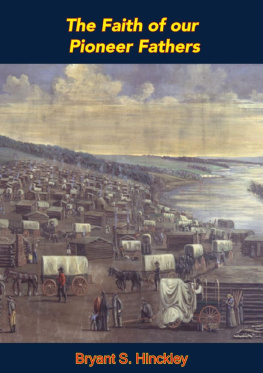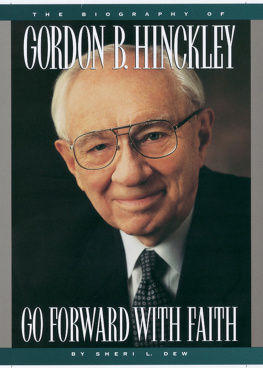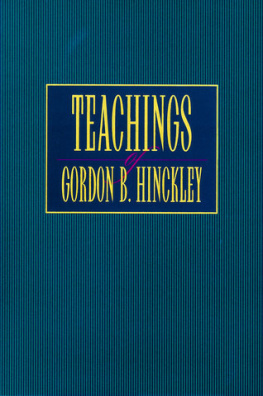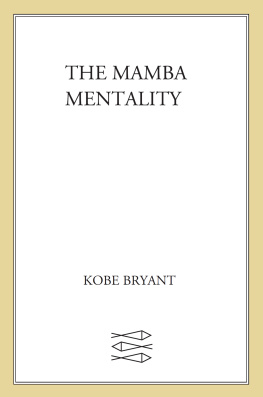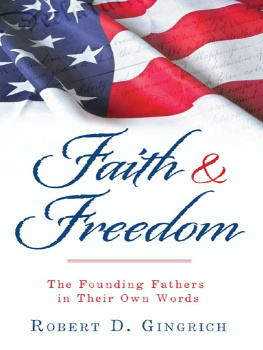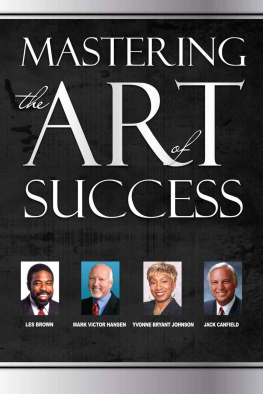This edition is published by Papamoa Press www.pp-publishing.com
To join our mailing list for new titles or for issues with our books papamoapress@gmail.com
Or on Facebook
Text originally published in 1956 under the same title.
Papamoa Press 2018, all rights reserved. No part of this publication may be reproduced, stored in a retrieval system or transmitted by any means, electrical, mechanical or otherwise without the written permission of the copyright holder.
Publishers Note
Although in most cases we have retained the Authors original spelling and grammar to authentically reproduce the work of the Author and the original intent of such material, some additional notes and clarifications have been added for the modern readers benefit.
We have also made every effort to include all maps and illustrations of the original edition the limitations of formatting do not allow of including larger maps, we will upload as many of these maps as possible.
THE FAITH OF OUR PIONEER FATHERS
BY
BRYANT S. HINCKLEY
TABLE OF CONTENTS
Contents
TABLE OF CONTENTS
ABOUT THE AUTHOR
Bryant S. Hinckley in his four score years has personally known most of the men whose faith he exhibits in this latest of his books.
His personal knowledge, his innate capacity for appreciation and his unstinting readiness to applaud nobility wherever he finds it, qualify him in a special way to write Faith of Our Pioneer Fathers.
He is the author of larger biographical works: Daniel Hammer Wells, Heber J. Grant, Melvin J. Ballard as well as of numerous other literary productions which attest the nature and extent of his interests and his research.
His personal experiences as a teacher, and an administrator have kept him through all his long life in association with people. Always a careful, interested and understanding friend, he has gained the confidence of hundreds of the obscure and scores of the eminent people of his day. This wealth qualifies him well to share his wide appreciation with his readers.
PREFACE
THE WORLD has never produced a better group of men than the pioneers of Utah, and no other group of men have done better pioneering. The reason for their superior work is not far to seek.
Those pioneers had in their hearts the love of God, a reverence for the Constitution of the United States, and a passion for freedom. Wherever their weary feet rested, the ground upon which they stood was dedicated to freedom.
Through the ages successful pioneering in all fields of honorable endeavor has been the result of vision backed by valor which means the capacity to see what can be done and the courage to do it. That is faith in the concrete; the faith by which our fathers lived and wrought.
Running through the center of their lives was a deep religious current, which gave direction to all they diddominated their thinking and held them steadfastly to their purpose.
Work redeemed the desert, made the roads, bridged the streams, and built the schoolhouses, but religion put meaning and effectiveness into that work.
This faith was the impelling force that brought them to these distant valesthat girded them in their struggles for an existence, that enabled them to drive the frown of desolation from the face of the land and make it smile with plenty.
In no previous dispensation has there been more abundant and convincing proofs of divine power than in the present.
From that fruitful field we have gathered this material. The value of this book lies chiefly in making available the faith rewarding experiences in the lives of the honored dead, who laid the foundations of this commonwealth.
The faith of our fathers did more than subdue the wilderness and make it habitable. It established in this western land the ideals of democracy, upheld the majesty of law and planted here the love of peace, justice and freedom.
To make this faith live and grow in our hearts and in the hearts of our children is the object of this book.
BRYANT S. HINCKLEY
CHAPTER IJoseph Smith; the Modern Prophet
AFTER a hundred years, Joseph Smith, the Modern Prophet, stands high among the towering figures of all time. His place is at the head of the Dispensation of the Fullness of Times, the crowning Gospel dispensation, the most exalted place conferred by heaven upon a mortal man.
There are no authentic portraits of him and there is no one living who saw him. Before he was 39 years of age he was martyred in cold blood at Carthage Jail, Illinois. George Q. Cannon who, as a young man, knew the prophet intimately, has left this description of him:
He was a man of great physical beauty and stateliness, six feet in height, standing in his stockings, and grandly proportioned. In his mature years he weighed about two hundred pounds. His eyes were blue and tender; his hair was brown, plentiful and wavy; he wore no beard, and his complexion was one of transparency so rare as to be remarkable; the exquisite clearness of his skin was never clouded. His carriage was erect and graceful; he moved always with an air of dignity and power which strangers often called kingly. He was full of physical energy and daring. Without any appearance of effort he could perform astonishing feats of strength and agility; and without any apparent thought of fear he met and smiled upon every physical danger. When he had become educated and refined as gold in the furnace by his communion with the Holy Spirit, his words were heeded as if they were falling jewels. He never had to beg for listeners; nor had he to ask twice an audience with anyone who had once met him. The great men of the nation, with whom he came into contact, felt the power of his mighty spirit. He was their peer as a philosopher and a statesman. He was more, because he not only knew the past, but he saw the future. {1}
In the following chapters, frequent reference is made to the prophet as the instrument through which the Gospel was restored and the Church organized again upon the earth, to his inspiration and power, to the majesty of his personality and the source of his remarkable leadership. {2} Two of his prophecies and their fulfillment are given in this chapter.
SAINTS DRIVEN TO THE ROCKY MOUNTAINS
On Saturday, the fifth of August, 1842, while Joseph was conversing with several of his brethren in Montrose, Iowa, he uttered a marvelous prophecy which, like every other prediction from his lips, has been literally fulfilled. He declared that the Saints would continue to suffer much persecution and would finally be driven to the Rocky Mountains, many would apostatize, others would be put to death by their persecutors or lose their lives in consequence of their exile. And many of those who listened to him would live to assist in building cities and see the Saints become a mighty people in the tops of the Rocky Mountains.
That prophecy was uttered publicly and was placed on record at the time.
Joseph Smith never lived to see the Rocky Mountains with his natural eye, but many who listened to him on that occasion were driven to the Rocky Mountains and spent their lives fulfilling the prophecy they heard fall from his lips on that August day.
The fulfillment of this prophecy records the greatest migration of its kind in all history. Between 1847 and 1869, the latter date marking the advent of the railroad, more than 80,000 people crossed the plains principally by ox teams. Of this number, however, 6,000 were unable to finish and were buried by the wayside, in nameless graves. This migration had a far reaching effect upon the destiny of America. Time only will reveal its place in history.



